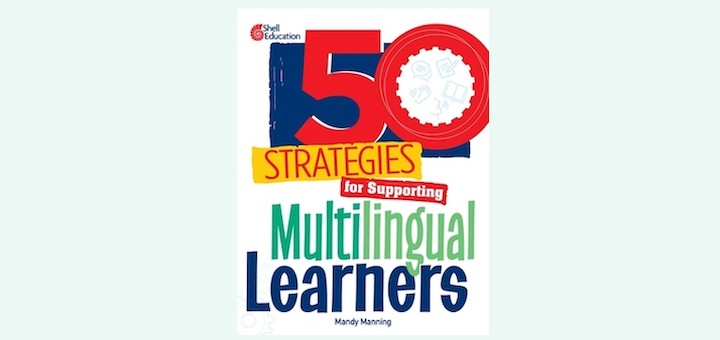Tagged: multilingual learners
Through a combination of clear explanations, real-life strategies and vibrant illustrations by Valentina Gonzalez, Welcome to Teaching Multilingual Learners breaks down the task of teaching multilingual students into digestible, well-structured concepts, writes Melinda Stewart.
When teachers apply “translanguaging” in class, write Larry Ferlazzo and Katie Hull Sypnieski, they’re using a student’s home language as a scaffold to help them achieve English language acquisition and to learn academic content they might not be able to access yet in English.
In “Sentence Strategies for Multilingual Learners” Panero and Yip offer a robust toolkit that empowers educators with effective strategies to support MLs as they navigate the intricacies of language and literacy acquisition through content, says ML educator Melinda Stewart.
While many multilingual students gain social language in two years, abstract, highly structured academic language requires much more time. Tan Huynh advocates teaching MLs at the sentence level because it facilitates understanding of content and fosters academic writing skills.
Mandy Manning’s book is essential reading for teachers who are new to the world of language diversity and would be a great PD resource for general education teachers and staff. Teacher Jeanette Pine finds the book clear, concise, easy to navigate, and filled with important reminders.
Chunking alone won’t help multilingual learners with the deluge of new content they experience. Tan Huynh shares the Input-Output Loop, a strategy to make chunking more effective by assuring immediate processing time and segmenting content into units students can internalize.
Most teachers are not multilingual learner specialists, writes NBCT and 2018 NTOY Mandy Manning. But most ARE teaching MLs. Overcoming a language barrier may feel insurmountable, but it’s not. Manning shares three key strategies that help fully support MLs in general classrooms.
Each subject has its own rules for writing. After years of figuring out how to teach writing to MLs, especially those who are no longer beginners, social studies teacher and language specialist Tan Huynh has refined his process for explicit academic writing instruction.
100-Word Stories is a valuable resource, providing a structured yet flexible framework that serves as a tool to enrich language instruction and a catalyst for exploration and creative expression in the classroom. It will be especially valuable to her SLIFE learners, writes Melinda Stewart.
Equity can be found in many places in the school – on the walls, on bookshelves, and in policies. The best place to check for equity for multilingual learners is by examining teacher and student schedules. Tan Huynh describes the practices that lead to equitable scheduling.


























